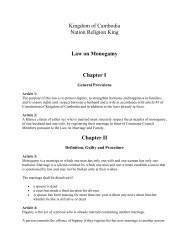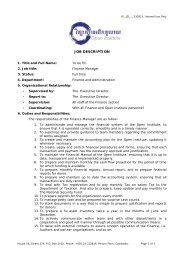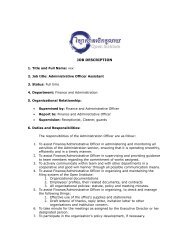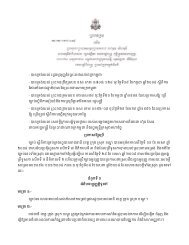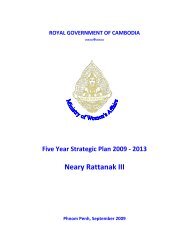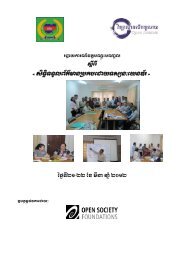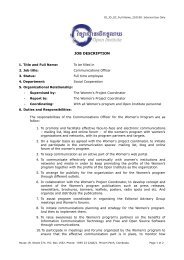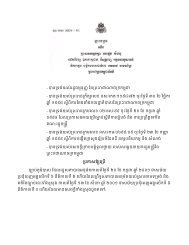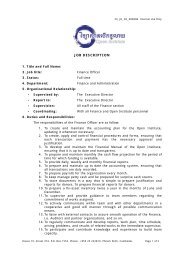Education Education An approach to some basic Indicators for ...
Education Education An approach to some basic Indicators for ...
Education Education An approach to some basic Indicators for ...
You also want an ePaper? Increase the reach of your titles
YUMPU automatically turns print PDFs into web optimized ePapers that Google loves.
84 Catalog of Indica<strong>to</strong>rs Health with any nutritional problem. Meanings: First <strong>for</strong>mula, the general one: WNR= Women with nutritional problems rate, WN= Women with nutritional problems, TW_age15-‐49=Total women age 15 -‐ 49; Second <strong>for</strong>mula: Uwr=Undernourished Women rate, UW= Undernourish Women, TW_age15-‐49=Total Women age 15-‐49; Third <strong>for</strong>mula: MWr=Malnutrition Women rate, MW=Malnutrition Women, TW_age15-‐49= Total Women age 15-‐49. Priority: Yes Indica<strong>to</strong>r developed: Yes Local/International: International Kind of indica<strong>to</strong>r: Impact Data source/s: Population-‐based surveysService statisticsChallenges: Linked <strong>to</strong> policy: Other comments: It could be recommendable <strong>to</strong> disaggregate data by severeness of specific causes of under-nutrition, age and area (rural/urban). Note the different meanings of <strong>for</strong>mula examples: one provides in<strong>for</strong>mation about the quantitative in<strong>for</strong>mation of an specific group of causes in relation <strong>to</strong> the <strong>to</strong>tal group of women age 15-‐49, and the last one provides in<strong>for</strong>mation about the importance of each group of causes among all the causes. Definitions: Undernourishment is the insufficient consume of calories and proteins <strong>for</strong> a correct operational of the organism, the growth and a normal physical activity. Dietetic deficiency is the lack of specific nutrients (minerals and vitamins). Diseases are <strong>some</strong> specific illness that hinders nutrients assimilation (such as diarrhea). The physiological needs of pregnant and lactating women also make them more susceptible <strong>to</strong> malnutrition and micronutrient deficiencies. Twice as many women suffer from malnutrition as men, and girls are twice as likely <strong>to</strong> die from malnutrition as boys. To mainstream gender equity in its programmes <strong>for</strong> improved food security and nutrition, FAO has set itself <strong>some</strong> targets <strong>to</strong> 2013.





